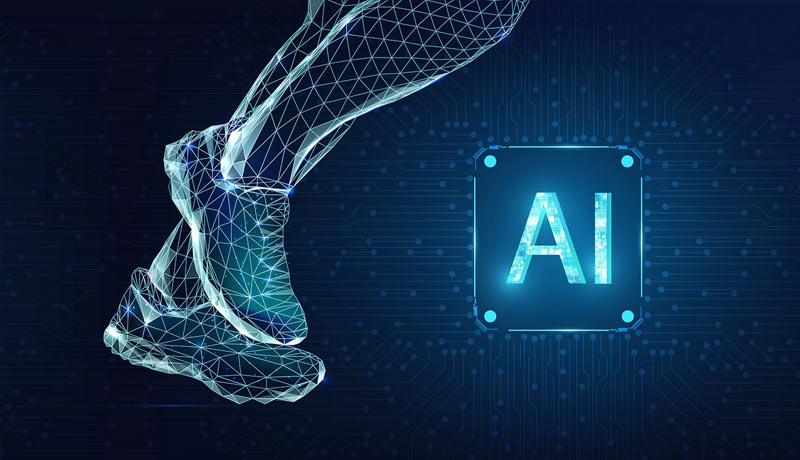
By TECHx News Desk
There are things in this world that can be quantified and not, and anything that can be quantified can be predicted with minimum error with the help of data analytics and artificial intelligence. The world of sports is rich in such quantifiable data, making it ideal for the use of artificial intelligence.
Though many industry veterans were not too happy with the concept, in the beginning, the use of artificial intelligence in sports has now become commonplace. And with the advancements that are being made in the field of artificial intelligence, it would be safe to say that the trend is not here just to stay but grow with time.
AI can be used in sports for a variety of purposes like scouting and recruiting, training and performance analysis, maintaining player fitness and health, and also broadcasting and advertising.
Although it can be argued that humans cannot be evaluated quantitatively, their performance can definitely be subject to quantitative analysis. The movie ‘Moneyball’ gives you an example of how this can be done. In the movie, the general manager of a small baseball team uses statistical data and analytics of individual players to build a strong team that goes on to beat bigger teams, despite them having a small budget.
However, the perceptual limitations of humans can keep them from accurately recording and assessing these metrics. Nevertheless, with the entry of big data and artificial intelligence in sports management, the process of recording and measuring these indicators of future success is becoming easier and more reliable.

Ander Alcon, Lead Data Scientist at Olocip, an AI solutions company based out of Spain that serves sports management and business clients, explains this: “We have a computer vision system that has been able to help Nadal win the Roland Garros in 2020. We have been also working on basketball solutions regarding scouting and performance prediction, but our main focus is on football and tennis.”
AI is also increasingly being used in businesses for their digital transformation. “Olocip’s AI is key for organizations, as it provides them with the opportunity of escalating their business to a higher level. A very common solution that we provide to the organizations is digitalizing all the departments and workflows of the company, providing a huge boost and accelerating growth,” says Alcon.
Alcon says that there are further applications of AI in sports: “There are multiple areas where technology is helping sports to evolve and develop new skills that are the key to success. One of the main areas is performance improvement and decision making. Bringing solutions that are capable of optimising the decision-making of the players, coaches and staff is essential to improve the overall performance of the teams and athletes. Another main aspect is the optimization of the investments that a club is doing on the market, and AI tools provide solutions to reduce the uncertainty and improve the decision making in order to maximize the profit and get the players that are going to provide better performance for the team. Providing technological solutions in the medical area is also the main element in sports, preventing injuries and helping the speedy recovery of the players.”
AI models can help reduce the uncertainty around athletes’ environments. This approach helps the development of players’ skills in different ways helping the player fulfill his potential reducing the probability of being injured, predicting players’ performance in a new context in order to choose the best destiny for his progression, or using computer vision techniques to improve players’ trainings and skill development.
In training and performance analysis AI can be used to detect patterns in opponents’ tactics, strengths, and weaknesses. This can go a long way in formulating gamelans that could be to your advantage and maximise the chance of victory.

Rida Mamlouk, Business Development Consultant at Olocip says: “Today, investing in artificial intelligence is paramount in the world of sports. For decades, there has been a great deal of resistance to the use of technology in football. In its report, the International Football Association (IFAB) concluded that in-game decision-development assistance was not required for the “beautiful game.” The IFAB nevertheless decided to rethink how technology could assist referees in making the right calls following a number of mistakes at major competitions, such as the 2010 FIFA World Cup.”
He adds: “In recent years, AI and machine learning have gained considerable success in the world of football. The use of AI in predicting outcomes of matches has become widely accepted. In order to predict the success of football games, machine learning algorithms use big data analysis. Data scientists are now using AI to help teams come up with spot scenarios and analytical interventions.”
Mamlouk further explains: “AI-based, smart algorithms are capable of simulating a wide number of events. This function helps analysts to analyze information obtained from simulations. Such observations will help to make decisions on what is going to happen on a pitch or any type of medium for any sport. This, in effect, helps coaches make educated choices about players as they plan for a game to come. Through studying the historical data of the opponent, AI can be used to evaluate strategies that can significantly aid in choosing and ultimately creating the best team for a specific game.”
Major sports teams are increasingly using wearable technology to keep track of players’ health and fitness. AI systems can constantly measure and analyse the stream of data collected by these wearable devices to identify probable health risks players could develop. This could help the teams to maintain their most valuable players in prime condition through long competitive seasons.
AI solutions not only help players and sports managers but can also be a big boon to broadcasters and audiences as well. From helping automatically choose the right camera angle to display on the viewer’s screen to automatically providing subtitles for live events in different languages based on the viewer’s location and language preferences, AI solutions can do wonders for both the broadcasters and the audience alike. It can also be used to present ads at the best opportunities based on the mood of the crowd thereby enabling broadcasters to effectively utilise monetization opportunities through ad sales.